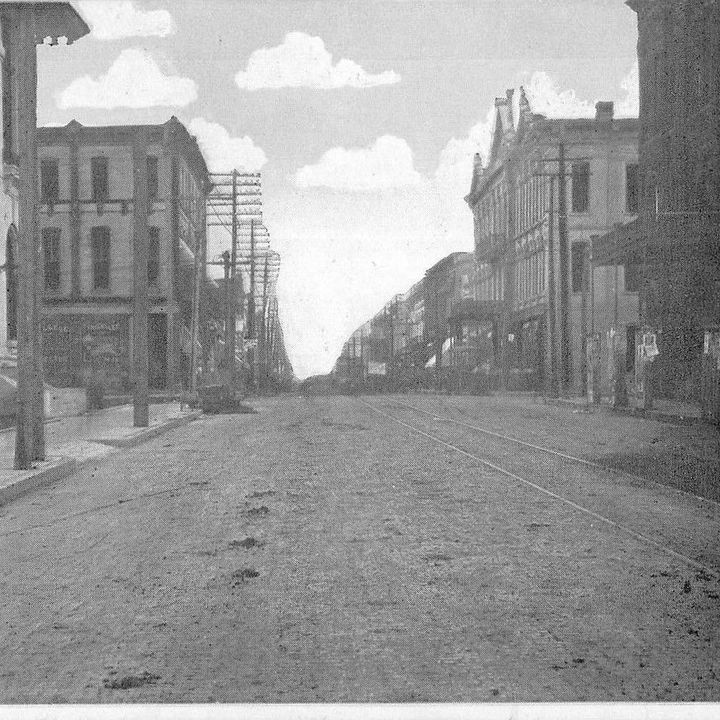Prior to the construction of the Sherman Opera House as it stands today, the land itself holds a lot of Sherman history. Seated on the corner of Pecan and Travis in 1874 was a Union Church and the Sherman Opera House. The Dallas Daily Herald printed this advertisement on January 24, 1874, “Sherman Opera house now open. First class talent wanted. Salaries guaranteed. Address, Box 204, Sherman Postoffice (sic).”
In 1878, The Galveston Daily News printed “Manager Elkin, of Dallas, has leased the Sherman Opera-house for the ensuing year.”
In 1879, a fire spread through the opera house and Union Church. The loss was estimated to be $40,000. (That’s over 8 million today).
In 1880, the Masonic Chapter of Sherman built the Grand Opera House on the site, and the new opera house became the most well-known opera house southwest of St. Louis. The Opera House and Masonic Lodge was designed by architect George Dickey and built by Captain Leander Franklin Ely who donated the bricks from his Sherman factory. Judge C.C. Binkley managed and organized funding for the project. The Grand Opera House was originally a 3-story Victorian building that featured twin cupolas. The opulent interior included carpeted aisles, damask curtains and plush seating for opera goers. The Masons occupied the third floor of the building, holding meetings and attending to their many lodge responsibilities. From 1892 until 1908, both the Travis Lodge Masons and Sherman Masons occupied the third floor. The Masons leased out the auditorium and second floor for opera house operations.
In post-Reconstruction Sherman, the focus on economic and cultural expansion was at its height. The five colleges in Sherman earned the city the popular moniker “Athens of Texas”, and the Grand Opera House was instrumental in the development of culture. The auditorium served other community purposes, including church revivals and even temperance lectures during the second wave of the temperance movement. On February 7, 1894, the Galveston daily News reported that the Opera House hosted a confederate concert to raise funds for a confederate monument.
In 1887 The Grand Opera House was sold to the Sherman Opera House Company. The Fort Worth Daily Gazette reported on May 4, 1887 “SHERMAN, TEX., May 3.–…The Grand opera house in this city was sold today to satisfy a judgment of $24,000, and was purchased by the Sherman Opera House Company.”
The Sherman Opera House played a vital role in not only the cultural expansion in Sherman, but also in its educational expansion, even housing Mahan’s Commercial College in the 1890’s.
The building withstood the 1896 “Sherman’s Black Friday” when a tornado hit the town causing major catastrophe.
The Sherman opera House was later used during WWI as a venue for memorial services for local war heroes. One memorial held for a victim of the Tuscania had written a letter to his Reverend at the Nazarene Church, and after his death, the letter was read at the Opera House in remembrance. In 1918 as the United States involvement in WWI was at its peak and the war began to take its toll on the economy, the Sherman Opera house closed its doors.
The Sherman Opera House later housed a variety of stores including a national department store. It held the Marks Brothers department store during the 1920s, a Montgomery Wards during the 1940s, and finally in the 1960s the building was remodeled, and the twin cupulas removed. The third floor was removed, and the building became home to Atherton’s Music Company.
It has been the home of the Siebman law firm since 2011. The firm began restoring the second floor of the building including the huge, circular windows. In 2021, the talented Patrick Shackleford painted an amazing 26’x 9’10” mural on the second story featuring a replica postcard of North Travis Street, Sherman in 1882.
The Sherman Opera House has played a pivotal role in Sherman history, not only for the building itself, but for all the great ideas and intellect it has bred and encouraged.


